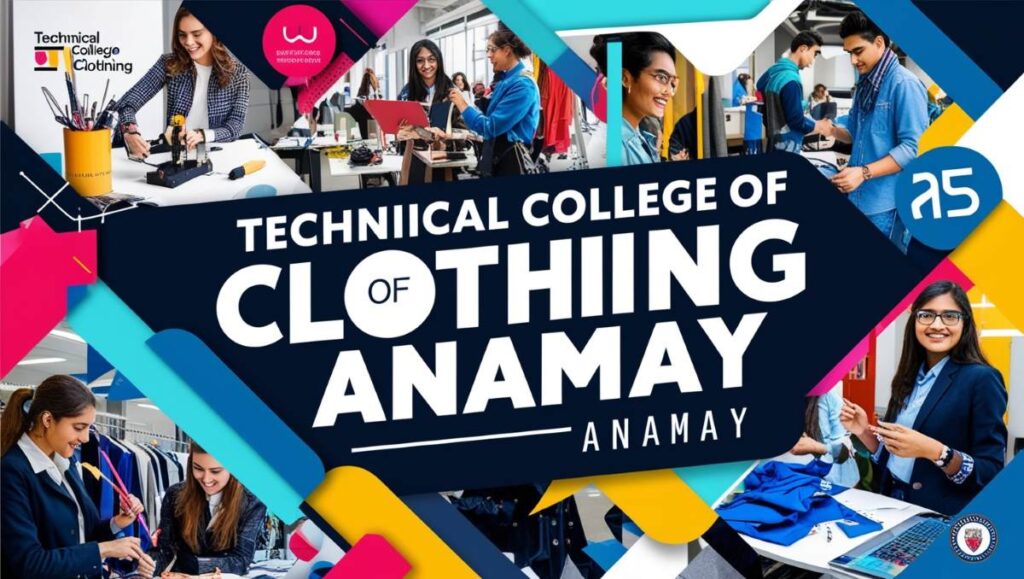Fashion is more than just clothing; it’s a dynamic form of expression that reflects culture, identity, and innovation. As the industry evolves at an astonishing pace, the demand for well-rounded professionals in fashion has skyrocketed. Education plays a pivotal role in shaping this future. Enter the Technical College of Clothing Anamay—an institution that stands at the forefront of fashion education. Here, creativity meets practicality, equipping students with skills that go beyond sewing patterns and sketching designs. With an engaging curriculum and hands-on experience, Anamay is redefining what it means to prepare for a career in fashion. Let’s explore how this college sets itself apart from traditional educational institutions and why it might just be your stepping stone into the vibrant world of fashion design.
Traditional vs. Technical College of Clothing Anamay
Fashion education has traditionally relied on established universities, with a focus on theory and historical context. Students often delve into textbooks rather than hands-on experience. This can leave them unprepared for the fast-paced fashion industry.
In contrast, the Technical College of Clothing Anamay emphasizes practical skills alongside theoretical knowledge. Programs are designed to reflect current industry needs and trends. Students engage in real-world projects that enhance their learning experience.
The college fosters creativity while providing technical training in design, production, and marketing. This balance equips students with versatile skills essential for success in various fashion roles.
While traditional institutions may offer prestige, the Technical College of Clothing Anamay delivers actionable insights that empower its graduates to excel right after they leave campus. The focus is not just on what you know but how effectively you can apply it in today’s competitive environment.
Unique Features of Technical College of Clothing Anamay
The Technical College of Clothing Anamay stands out for its innovative approach to fashion education. The college integrates traditional craftsmanship with modern techniques, ensuring students are well-rounded in their skills.
One unique aspect is the hands-on learning experience. Students engage directly with industry-standard tools and materials from day one. This practical exposure builds confidence and competence.
Another distinguishing feature is the emphasis on individual creativity. Each student is encouraged to explore personal design styles, fostering a vibrant atmosphere of innovation.
Additionally, strong ties to local artisans provide valuable mentorship opportunities. This connection between students and professionals enhances real-world understanding while preserving cultural heritage within fashion.
The college’s commitment to sustainability shapes every course offering. By promoting eco-friendly practices, students emerge as responsible designers ready to tackle future challenges in the fashion industry.
Curriculum and Course Offerings
The curriculum at Technical College of Clothing Anamay is designed to meet the dynamic needs of the fashion industry. Students dive into a variety of courses that cover everything from design fundamentals to advanced textile science.
Hands-on training is a cornerstone here. Students learn through practical projects, allowing them to apply theoretical knowledge in real-world scenarios. This approach fosters creativity and innovation.
Moreover, specialized electives allow students to explore niche areas like sustainable fashion or digital design techniques. The goal is not just education but empowerment for future leaders in fashion.
Collaborative workshops with industry experts are also part of the experience. These interactions provide invaluable insights and networking opportunities, preparing students for successful careers right out of college. With an ever-evolving syllabus, this institution stays ahead in offering relevant skills that resonate with current market demands.
Faculty and Student Success Stories
The faculty at the Technical College of Clothing Anamay are industry veterans. With years of experience, they bring real-world insights into the classroom. Their passion for teaching inspires students to push boundaries and explore their creativity.
Students often share transformative stories about their journeys. Many have landed internships with renowned fashion brands while still studying. These experiences provide a bridge between theory and practice, enriching their education.
Notable alumni have made significant strides in various sectors—designing collections for high-profile companies or starting their own labels. Their success serves as motivation for current students who dream big.
The collaborative environment fosters mentorships that last beyond graduation. Faculty members guide students through challenges, ensuring they feel supported every step of the way.
Each story reflects the commitment to nurturing talent within this unique institution—a true testament to its impact on future fashion leaders.
Industry Partnerships and Opportunities for Students
The Technical College of Clothing Anamay stands out for its strong ties to the fashion industry. These partnerships create a bridge between students and real-world experiences.
Collaborations with leading brands offer internships that are invaluable. Students gain hands-on experience while working on live projects, enhancing their portfolios significantly.
Networking opportunities abound through guest lectures and workshops hosted by industry professionals. This direct interaction helps students understand market trends and expectations.
Moreover, the college frequently organizes fashion shows that showcase student designs. Such events attract attention from potential employers and media alike, providing a platform for aspiring designers to shine.
These initiatives not only enrich the educational journey but also pave pathways for successful careers in fashion. The emphasis on practical experience ensures graduates are job-ready from day one, making them appealing candidates in a competitive field.
The Impact of Technology on Fashion Education
Technology is revolutionizing fashion education in unprecedented ways. Virtual reality, for instance, allows students to experience design environments without leaving the classroom. They can visualize garments on avatars, providing instant feedback and enhancing creativity.
Online platforms are expanding access to knowledge. Students from various backgrounds can connect with industry experts through webinars and interactive workshops. This democratization of learning fosters a more diverse talent pool.
Additionally, software tools streamline the design process. Programs like CAD enable precise designs that save time and resources. By mastering these technologies early on, students gain a competitive edge in their careers.
Moreover, social media has become an essential part of marketing strategies in fashion education. Students learn how to build personal brands and engage audiences effectively through digital channels.
Incorporating technology into the curriculum ensures graduates are not just skilled artisans but also adaptable professionals ready for an ever-evolving industry landscape.
Preparing Students for a Sustainable Future in Fashion
Sustainability is at the forefront of modern fashion. The technical college of clothing Anamay recognizes this shift and integrates it into its curriculum.
Students learn about eco-friendly materials, waste reduction techniques, and ethical sourcing practices. These topics are not just theoretical; they involve hands-on projects that allow students to see their impact firsthand.
Workshops with industry leaders further emphasize sustainable practices. Students gain insights from professionals who prioritize environmental responsibility in their work.
This forward-thinking approach prepares graduates to meet market demands for sustainability. They emerge as innovators ready to tackle pressing challenges within the fashion industry.
By focusing on sustainable education, the technical college of clothing Anamay shapes a generation that values both creativity and responsibility. This balance will redefine what it means to be successful in fashion today and tomorrow.
Conclusion:
Fashion education is evolving rapidly, and the Technical College of Clothing Anamay stands at the forefront. By blending traditional techniques with modern innovations, it prepares students for a dynamic industry. The unique features of this college, from its hands-on curriculum to its dedicated faculty, create an enriching environment for aspiring fashion professionals.
The partnerships with industry leaders provide invaluable opportunities that further enhance student learning experiences. As technology continues to reshape fashion design and production processes, institutions like Anamay are adapting their coursework accordingly.
Moreover, sustainability has become a pivotal focus in today’s fashion landscape. The college emphasizes eco-friendly practices and ethical considerations within its programs.
By equipping students with essential skills and knowledge while fostering creativity and critical thinking, the Technical College of Clothing Anamay is paving the way for future innovators in fashion. Students leave not just as graduates but as well-rounded professionals ready to tackle challenges in a sustainable world.



